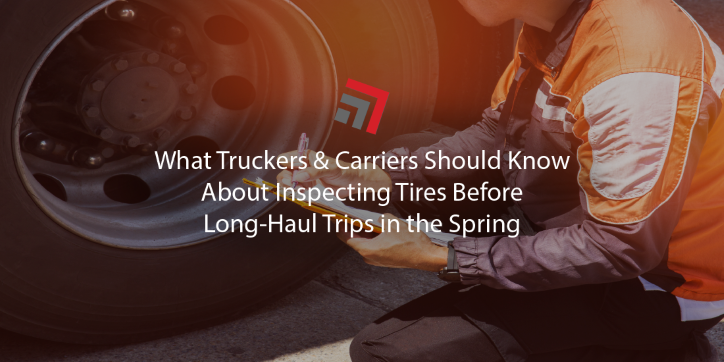It’s the beginning of March and spring is slowly making its way here, which means truckers & carriers should be aware of how the harsh winter conditions can affect the performance of heavy-duty trucks and how to inspect their tires before long-haul trips in the springtime.
It’s never bad to be proactive, which also goes for tire maintenance – something that can save truckers from missing deadlines due to a variety of issues involving their underinflated tires.
Changes in Air Temperature
Changes in air temperature have the ability to affect the speed of air molecules in a tire, which can result in a fluctuation of tire inflation pressure (PSI), FleetOwner stated.
Hot tires, which is when heat generated from normal use causes the tire to expand slightly, which can also affect the sound of a tire. More importantly, when a truck is coming off the highway, the tires on that truck can see roughly a 15% increase in inflation pressure compared to cold tires. According to FleetOwner, cold inflation is based on room temperature of 68 degrees Fahrenheit and does not include any inflation pressure build up due to vehicle operation.
However, truckers will not know the exact pressure rating of their tires by just looking at them. There are common symptoms of under-inflation, that FleetOwner lists that include: the TPMS (tire pressure monitoring system light) light illuminating on dashboards, reduced steering and handling, longer stopping distance, increased road vibrations, and flapping noises coming from the tires. If this should happen, it is advised to pull over somewhere that you can inflate your tires to avoid any issues for the remainder of your haul.
What happens if I drive with underinflated tires?
Well, running your tire(s) down can definitely reduce tread life and create a substantial decrease in your fuel economy. In some cases, when tires are under-inflated it can cause overheating and premature wear and tear on tires, or even a blowout – as the rubber to ground ratio is off and can lead to an increase in friction, according to FleetOwner.
In addition, the Department of Transportation (DOT) has minimum mandatory requirements for tread depth on all commercial vehicles; 4/32-in. for the steer tire position and 2/32-in. in all other positions, this makes sure that commercial truck tires have the appropriate level of tread to operate, says FleetOwner.
As the winter season starts to shift over to spring, it’s important for truckers and carriers to realize the implication and information regarding keep their tires properly inflated, especially for long-haul trips. Should you have any questions or comments regarding this, contact a team member today!



Recent Comments